*My posts may contain affiliate links, which means I may receive a small commission, at no cost to you, if you make a purchase through a link! Thank you for supporting my website!*
Last updated on February 28th, 2024 at 04:22 pm
Wondering if you can mix wood stain with paint, polyurethane, shellac, and/or lacquer? Well, look no further because I have your answer!
You can mix wood stain with most wood sealing products, including paint, polyurethane, shellac, and lacquer. The only rule is to never mix oil-based wood stain with a water-based product or vice versa as they are never compatible.
Now that we’ve got the basics out of the way, let’s break into the details a little further so you can understand the benefits and drawbacks of mixing stain with various sealing products.
Let’s dive in!
Quick Navigation: Mixing Wood Stain With Paint Or Polyurethane
- What Happens When You Mix Wood Stain With Paint
- What Happens When You Mix Wood Stain With Polyurethane
- What Happens When You Mix Wood Stain With Shellac
- What Happens When You Mix Wood Stain With Lacquer
- Final Thoughts
What Happens When You Mix Wood Stain With Paint
You can mix a water-based stain with water-based paint and acrylic paint as it already contains an acrylic resin. An oil-based stain will mix only with an oil-based paint.
Wood stain comes in two basic colors, brown and grey, so it’s perfect for enhancing that wood look, but not for more colorful décor.
By combining wood stain and paint, you get both.
Advantages Of Mixing Wood Stain And Paint
- Adding paint opens up a whole spectrum of colors while retaining the preservative quality of the stain. Just ensure that you have mixed the paint and stain thoroughly. Then paint it on with a brush and wipe it off with a cloth to the desired depth of color.
- Paint will give an opaque coating to the wood. However, by diluting the paint before mixing it with the wood stain, you can achieve a translucent coating and still be able to see the grain. Oil-based paint can be diluted with mineral spirits.
- Either full-strength or diluted, mixing paint and stain will give a beautiful antique effect to your wood.
Disadvantages of Mixing Wood Stain and Paint
- Because the stain is intended to soak into the wood, removing the paint will be much harder without completely sanding it off.
What Happens When You Mix Wood Stain With Polyurethane
Mixing stain with polyurethane is standard practice in woodworking and is easily done.
Again, an oil-based stain can be mixed with oil-based polyurethane, and a water-based stain with water-based polyurethane.
Polyurethane gives a protective coat and enhances the color of the stain. Depending on the wood stain color and polyurethane sheen, sometimes the polyurethane can appear hazy.
However, if you mix the polyurethane with a little bit of the stain before applying, the top coat will blend in with the stain better and leave behind a richer color.
To prepare the mix, stir the stain until the color is uniform and well-blended. Then do the same with the polyurethane. Ensure it is well mixed.
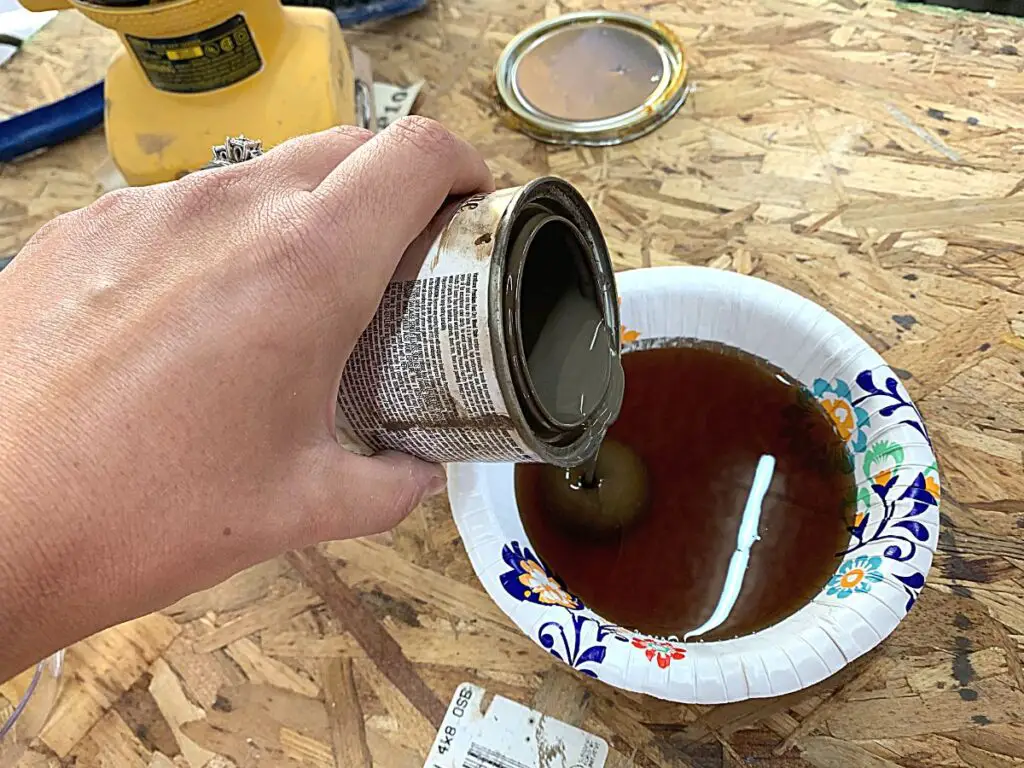
Avoid any bubbles forming as this will affect the final finish. Then combine the two in a clean container and stir well again to ensure it is thoroughly mixed.
A ratio of 1:1 is usually recommended, or 1:3 stain to polyurethane if you want a more translucent coating and retention of the wood grain.
Finish off with a coat of only polyurethane for added protection.
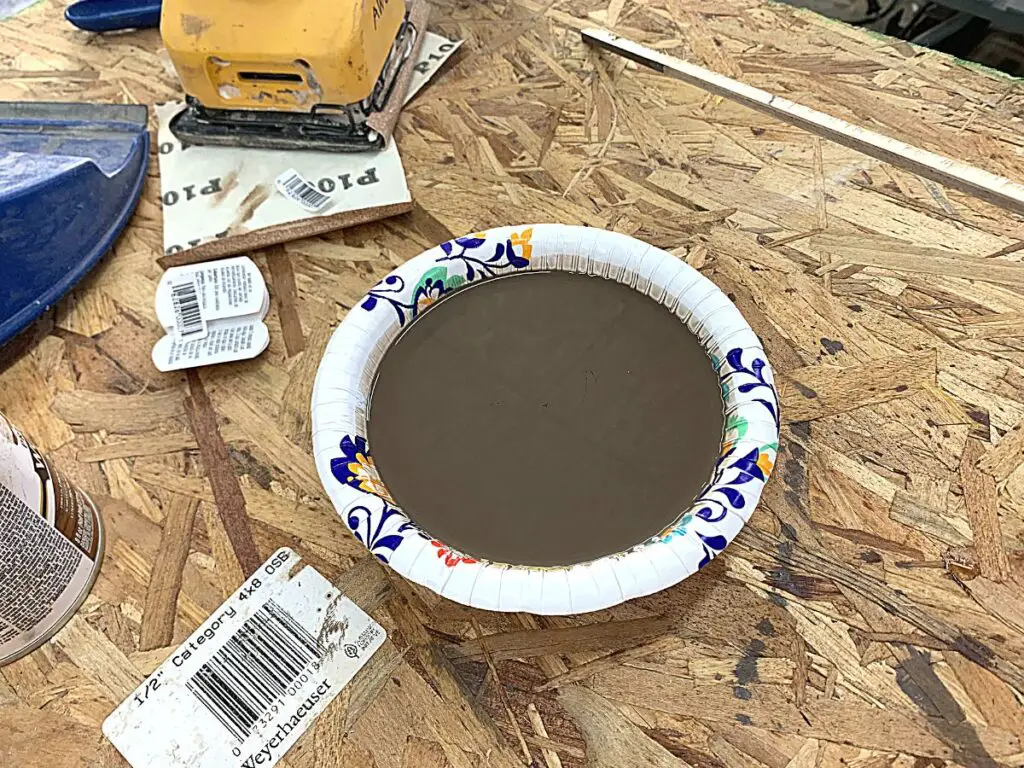
Advantages Of Mixing Wood Stain With Polyurethane
- By mixing wood stain and polyurethane, the stain color will be richer and the polyurethane coat will blend in better compared to applying the stain and then the polyurethane separately.
- The polyurethane will be less likely to alter the stain color – the polyurethane will now be tinted with the stain color instead of being tinted a different color from the manufacturer.
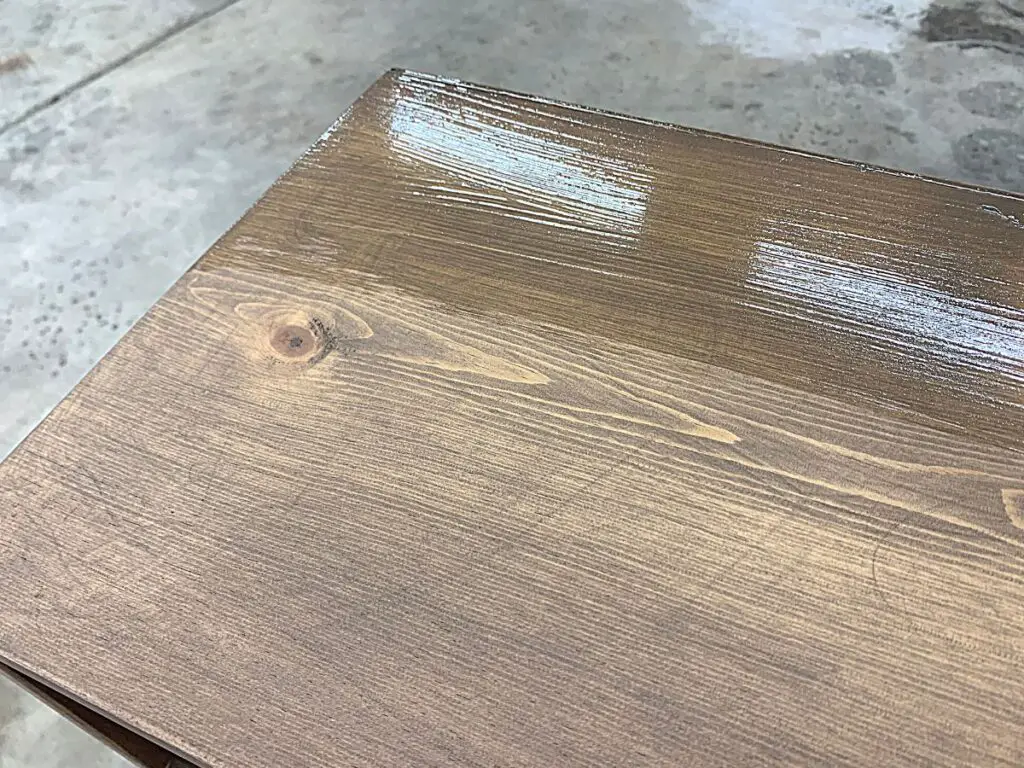
- The “more opaque” stain-poly mixture helps mask any discolorations in the wood – I missed some wood glue spots while sanding that were glaringly obvious after staining, but less obvious after applying 3 coats of the stain-poly.

Disadvantages Of Mixing Wood Stain With Polyurethane
- You need to be very accurate in your mix ratio. If you mix two separate batches, you will get different colors unless you stick closely to the same combination.
- The polyurethane will make the stain “float” on top (as opposed to absorbing into the wood). This means the more coats of mixed stain/polyurethane you apply, the more opaque the stain will be.
You will still want to apply a coat of stain normally so it can absorb into the wood properly. Then tint the polyurethane a little bit to help it blend in.
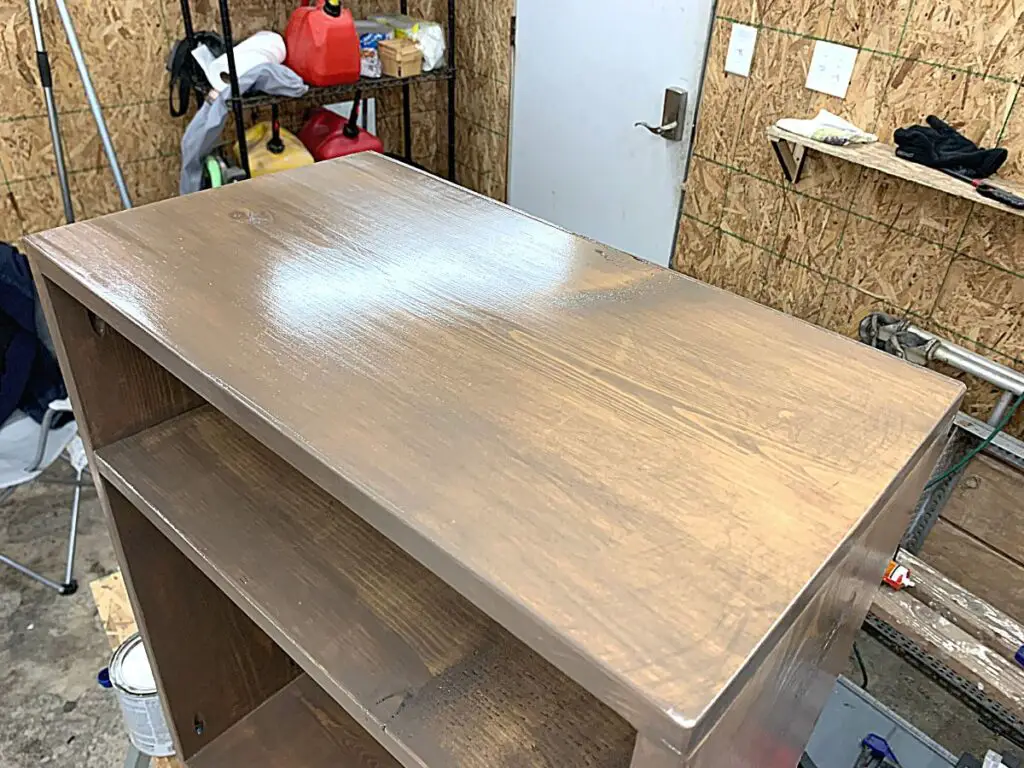
What Happens When You Mix Wood Stain With Shellac
To change the color of shellac, you will need to use an alcohol-based stain, not water-based or oil-based.
An alcohol-based stain is available in a limited range of colors and dyes the wood.
Once mixed, shellac is used most successfully in renovating older wooden objects. It seeps into the wood, opening the pores and creating a receptive surface for a final coat of an oil-based stain to achieve an even color.
It can be applied with a spray or wiped on with a cloth.
Advantages Of Mixing Wood Stain With Shellac
- Shellac only comes in a few colors – amber, garnet, or clear – so mixing wood stain opens up your color options and helps the shellac blend in with the stain color better
- When refinishing old wood, the alcohol-based mix works as a wood conditioner and creates a far more uniform finish when an oil-based stain is applied over it.
- Alcohol-based dries quickly and saves time compared to using only an oil-based stain.
- Shellac can be applied in thin coats to allow the grain to show through, giving a gloss to the surface once it’s dried.
Disadvantages Of Mixing Wood Stain With Shellac
- As a wood finish, shellac is not as durable as most others, scratches easily, and is brittle – so another topcoat such as polyurethane will need to be applied
- Mixing a wood stain with an already tinted shellac (ex. mixing red stain with amber shellac) can create unwanted color combinations – it’s wise to test on a scrap piece before applying it to your final project
What Happens When You Mix Wood Stain With Lacquer
Lacquer is sometimes preferred as a topcoat over polyurethane because it doesn’t yellow with age.
Since it comes clear and stays clear as it ages, mixing a little bit of wood stain into the lacquer will give you a topcoat that truly matches your stain color.
Plus, lacquer is a hard, waterproof, durable, fast-drying topcoat, so it’s an excellent alternative to a polyurethane topcoat.
Advantages of Mixing Wood Stain With Lacquer
- Lacquer is crystal clear (no amber tint from the manufacturer), so you can get a more true color when mixed with wood stain
- Lacquer is durable, waterproof, and dries fast – it only requires 1-2 coats so you can finish your wood projects faster if you mix your stain with it and apply 2 coats total (instead of 1 coat of stain and 3 coats of polyurethane)
Disadvantages of Mixing Wood Stain with Lacquer
- If the room is too cool while the lacquer dries, you may get an orange-peel effect that is unattractively rough, and if it’s too warm, you could get bubbles forming as the lacquer dries too fast – mixing stain with it makes it harder to work with as well
Final Thoughts On Mixing Wood Stain With Topcoats
There you have it!
Wood stain can be mixed with various coatings, each with its own pros and cons, to get a better finish on your wood project.
I hope this article helps you decide what option is best for your wood project.
Catch you in my next post!
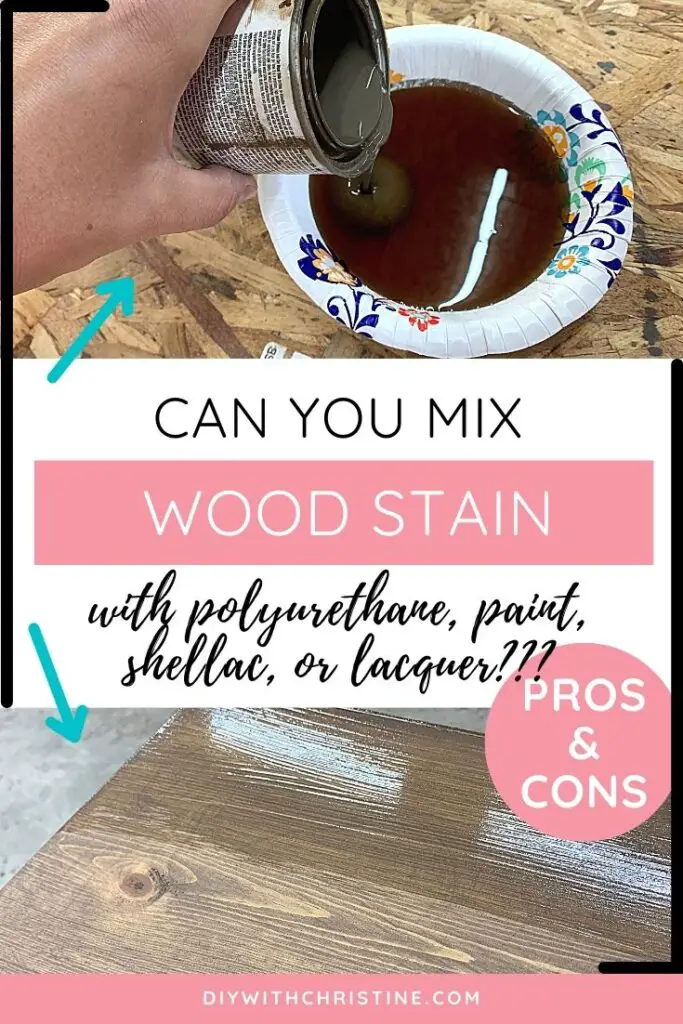

By Christine
Christine is a blogger and DIYer who tackles home renovation and decorating projects alongside her husband, Adam, for their personal residence and rental properties. Although she successfully tackles large renovation projects to avoid expensive contractor fees and bring her vision to life now, her path to success was not easy.
Go here to read her story, “From a Clueless First-Time Homebuyer To A Confident DIYer Creating Her Dream Home One Project At A Time“.
Popular Posts
DIY With Christine is a participant in the Amazon Services LLC Associates Program, an affiliate advertising program designed to provide a means for sites to earn advertising fees by advertising and linking to Amazon.com.






